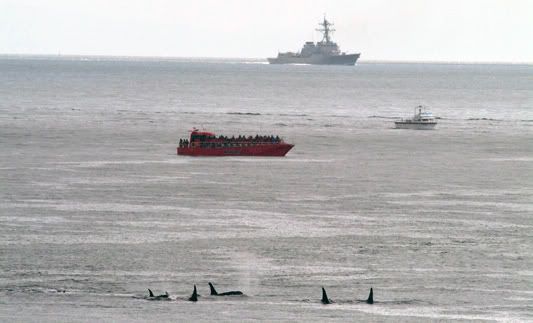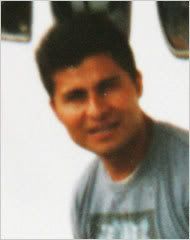"The Messenger spacecraft that zipped past Mercury two weeks ago found more evidence of the innermost planet’s turbulent past, including ridges that run hundreds of miles and a unique feature made up of more than 100 troughs radiating in all directions, scientists said Wednesday.
A preliminary look at data from the flyby, including 1,213 images, shows a small, cratered planet that superficially looks like Earth’s moon but is very different in reality, they said.
The robot spacecraft, the first to visit the planet in more than three decades, passed 124 miles above Mercury’s surface on Jan. 14 before continuing on a path that is to bring it back three more times in the next three years before settling into orbit.
During the encounter, the Messenger’s seven scientific instruments scanned the planet, its magnetic field and its wispy atmosphere in great detail.
“Our little craft has returned a gold mine of exciting data,” said Dr. Sean C. Solomon of the Carnegie Institution of Washington, the mission’s lead investigator.
“We were continually surprised,” Dr. Solomon said at a NASA news conference. “It was not the planet we expected. It was not the moon.”
Mercury remains a very dynamic planet and is a key to understanding the evolution of the inner solar system and its four rocky planets, including Earth, he said.
NASA’s Mariner 10 spacecraft, which made three flybys of Mercury in 1974 and 1975, mapped about 45 percent of the planet’s surface. The Messenger craft took pictures of another 30 percent during its first visit and should complete the portrait when it returns on its next flyby in October, scientists said.
After that visit and another in September 2009 to slow the craft, the Messenger is to settle into orbit around Mercury on March 18, 2011, for at least a year of studies.
Among the features spotted by the Messenger — short for the $446 million mission’s formal name, Mercury Surface, Space Environment, Geochemistry and Ranging — is one informally called “the spider.” It appears to be an impact crater 25 miles in diameter from which more than 100 flat-bottomed troughs shoot out in all directions, said Louise Prockter, an imaging instrument scientist at the Johns Hopkins University Applied Physics Laboratory in Laurel, Md., which built and operates the spacecraft.
“It’s a real mystery, a very unexpected find,” Ms. Prockter said, unlike anything ever observed in the solar system. It is unclear if the impact crater caused the shattered-looking feature or came later, after the troughs formed for another reason, she said."
Thursday, January 31, 2008
Friday, January 18, 2008
Bobby Fishcher dead at age 64
The most complete coverage of Fischer's life and career will most likely be at Chessbase, here.
Here's an essay I wrote about Fischer back in 2004, entitled The Search Continues.
Here's an essay I wrote about Fischer back in 2004, entitled The Search Continues.
His Nibs.com on PBS's Tempo
Labels:
fountain pen,
fountain pens,
his nibs
Wednesday, January 16, 2008
The White House and the Whales
"The fight over how humans should, and should not, interact with whales has moved from the waters off Antarctica, where environmental campaigners have been harassing Japanese whalers, to the White House.

While traveling in the Middle East on Tuesday, President Bush issued an exemption to the Navy from environmental laws that would otherwise limit its ability to use certain kinds of sonar used in anti-submarine warfare training, the Associated Press said."
Read the full story here.

While traveling in the Middle East on Tuesday, President Bush issued an exemption to the Navy from environmental laws that would otherwise limit its ability to use certain kinds of sonar used in anti-submarine warfare training, the Associated Press said."
Read the full story here.
Labels:
killer whale,
navy,
whale
Tuesday, January 15, 2008
Dracula's pen found
Hmmmmm. There are more photos and a few comments about this pen here. Don't bother watching the whole video. He just keeps writing....something.
Friday, January 04, 2008
‘Miraculous’ Recovery for Man Who Fell 47 Floors
"If you are a believer in miracles, this would be one."
DR. PHILIP S. BARIE, on the recuperation of Alcides Moreno, a window washer who plunged 47 stories last month.

Read the whole story here.
DR. PHILIP S. BARIE, on the recuperation of Alcides Moreno, a window washer who plunged 47 stories last month.

Read the whole story here.
Labels:
fall
Subscribe to:
Comments (Atom)



